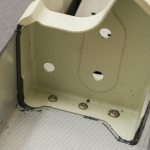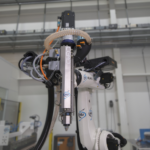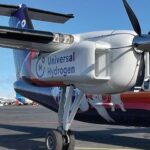A research at the University of Twente has brought the aviation sector one step closer to lighter aircraft. PhD candidate Yibo Su has developed a method for bonding lightweight constructions made from thermoplastic composites. This means more opportunities to use these materials. Thermoplastic composites are new, strong and – above all – lightweight and fuel-saving materials. They are made of fibres and thermoplastic synthetic materials. The use of thermoplastic composites has long been on the rise in the automotive and aviation sectors. For example, half the weight of the latest models from Boeing and Airbus consists of composite materials, of which a growing share are thermoplastic composites. But their increased use also throws up some challenges, in particular when it comes to the bonding between the different materials. The bonding between metal and thermoplastic composites was one such challenge. Su’s study makes an important contribution to addressing this, paving the way for the wider use of thermoplastic composites. Matthijn de Rooij, associate professor of Tribology and Su’s supervisor commented: ‘Many lightweight structures consist of several materials. You need to use the right material in the right place. However, this means that you need to ensure good bonding between the different materials. For use in aviation, the bonding between lightweight metals and thermoplastic composites is particularly important. The metal hinges of a door made from thermoplastic composites are one example. You can’t just drill a hole in thermoplastic composites, or put a screw in, because then you lose some of the strength of the materials. It is much better to create that join using an insert within the material. This insert needs to be firmly secured to the material so that it does not become a weak point. Su found a good way of securing the insert, so that the join is very strong – almost as strong as the rest of the composite. What we still need to know is whether this join will stay strong in the long term – after many flight hours, for example. Follow-up research is therefore needed in order to put this application into practice.’
Research
Thermoplastic composite parts are usually made using a material known as prepreg. This material is made of fibres that have been pre-impregnated with a plastic, which are then consolidated or stiffened using a press or an autoclave. Su has developed a way of placing a metallic insert into the mould and consolidating it along with the prepreg. This had never been done before and makes for significant gains in production time and cost. Su looked at which mechanisms help to ensure that the insert is firmly embedded in the thermoplastic composite. He then examined which factors affect adhesion. How rough or porous should the surface be in order for the plastic material to penetrate the insert and adhere to it? And which surface treatments are needed? Su discovered what the insert needs to look like and which surface the insert needs in order to adhere well to the thermoplastic composite.
Caption:
Example of an aircraft component made of thermoplastic composite with metal elements that have been mechanically fastened in the old-fashioned way














